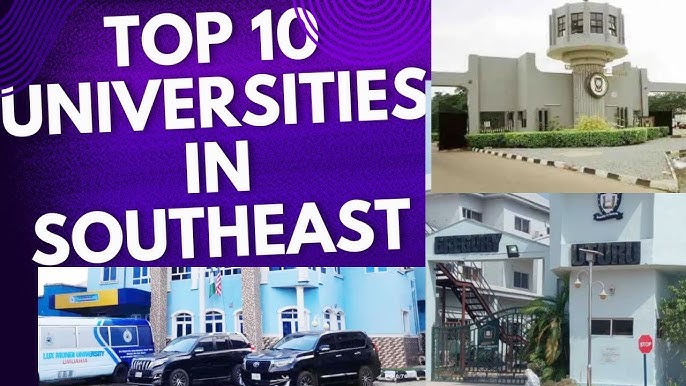
The latest rollout of the student loan scheme, enunciated by the Federal Government with much enthusiasm, was meant to function as a lifeline for indigent students across the nation. Yet, as the dust settles after the first phase of disbursement, a troubling pattern has emerged; students from tertiary institutions in the Southeast have been left out. This exclusion, highlighted by Prof. Chinedum Nwajiuba, the ex Vice-Chancellor of Alex Ekwueme University in Ebonyi State, is not only disheartening but indicative of systemic failures that must be urgently addressed.
The NELFUND (Nigerian Education Loan Fund), which oversees the loan scheme, was created under the Access to Higher Education Act, 2023, to offer interest-free loans to students in public tertiary institutions. The program was made to ensure that financial hardship does not impede access to education. However, despite the scheme’s great intentions, the execution has been far from equitable, especially for students in the Southeast.
Prof. Nwajiuba’s latest correspondence paints a bleak picture of the situation. He states that not a single student from the Southeast has benefited from the loans so far disbursed. This exclusion is not because of any inherent bias in the loan scheme itself but instead comes from internal lapses within the Southeast’s tertiary institutions. For example, Imo State University (IMSU) has yet to submit its student data records to NELFUND, thereby barring its students from applying for the loan.
This bureaucratic oversight is not just a minor issue; it represents a major barrier to educational access for thousands of students who are already struggling financially. Also, other institutions like Alvan Ikoku Federal College of Education have submitted incomplete data, with only 12 students applying for the loan despite a much higher student population. According to Prof. Nwajiuba, NELFUND has requested verification from the Acting Vice-Chancellor, but there has been no response, thereby further delaying the funds’ disbursement to those few students who did apply.
The broader context of this issue is even more concerning. The loan scheme’s initial phase emphasized on federal institutions, with intentions to include state institutions in subsequent phases. However, the inclusion of state institutions has been marred by delays and insufficient data submissions. As of the recent updates, only 20 out of 48 state universities and 12 out of 54 state colleges have successfully submitted the needed student data. This widespread non-compliance has forced NELFUND to postpone the application process for state institutions, further marginalizing students who are already at a disadvantage.
The implications of this marginalization in Student Loan Scheme are significant. The Southeast, a region with a strong educational tradition, risks losing out on an entire generation of graduates who can contribute substantially to the country’s development. The denial of access to education for these students, several of whom are already struggling financially, is a denial of their future. In fact, it is a failure of governance and leadership, both at the institutional level and at the broader regional level.
The situation equally highlights a broader problem of regional marginalization within the country. While the loan scheme was aimed to be a national initiative, the reality is that students in the Southeast are being left behind. This exclusion feeds into a long-standing narrative of marginalization in the region, where access to federal programs, infrastructural development, and representation in national affairs have often been lacking. But this editorial is not just about highlighting the issue; it is a call to action. Southeast institutions must rise to the occasion and fulfill their duties to their students. The stakes are high for complacency. Institutional leaders must also ensure that all necessary data is submitted to NELFUND accurately and promptly. They must as well take proactive measures to mobilize their students to apply for the loans while ensuring that they have the information and support they require to navigate the application process.
Furthermore, there is a need for greater accountability and oversight in the administration of national programs. The Tinubu administration must ensure that mechanisms are in place to monitor the inclusion of all regions in such initiatives. It is not enough to initiate a program; there must be a commitment to equity in its execution. This involves transparency in the application process, regular audits, and targeted support for regions that might be lagging. In sum, the marginalization of Southeast students in the student loan scheme is a problem that demands quick attention. It is a wake-up call for all stakeholders to act with decisiveness and urgency. The future of the Southeast’s students, and by extension, the region’s development, is at stake. The time to act is now, for if this trend continues, the Southeast will once again be left behind, and the repercussions will be felt for generations to come.




Chum in the building with liberate Nigeria now!!!